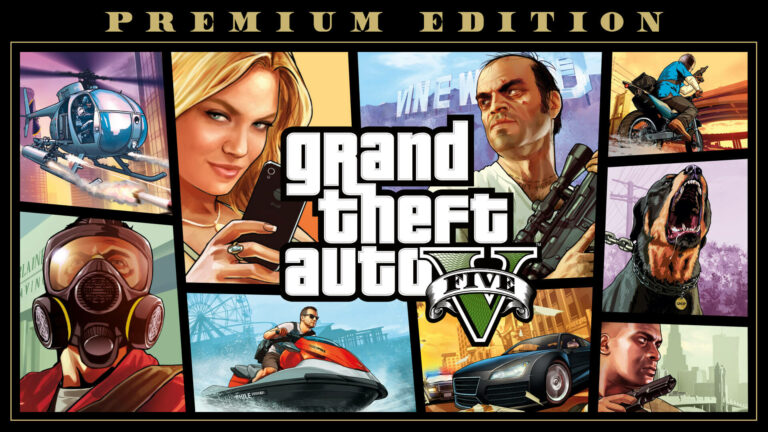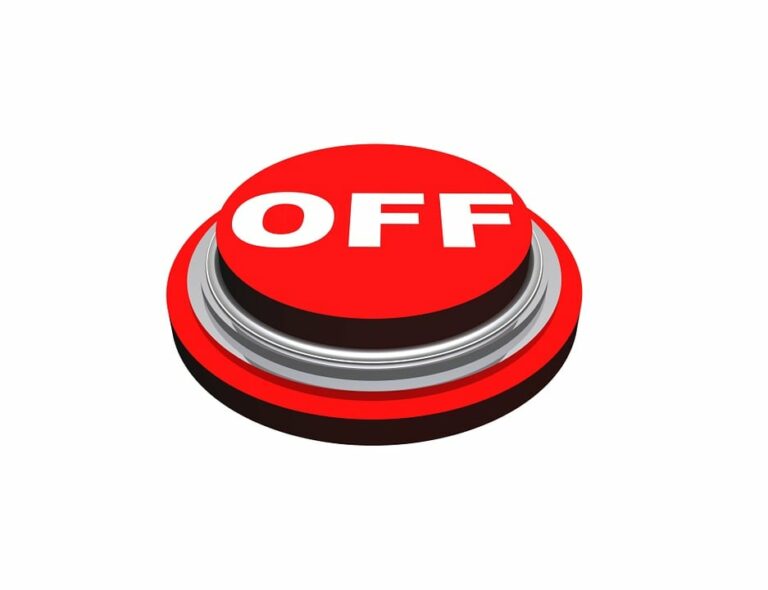Best Infant Car Seat Brand: A Comprehensive Guide to Protecting Your Littlest Passenger
Best Infant Car Seat Brand: A Comprehensive Guide to Protecting Your Littlest Passenger cars.truckstrend.com
The moment you become a parent, a profound shift occurs: your world narrows to focus on the safety and well-being of your precious newborn. Among the myriad preparations for their arrival, securing the right infant car seat stands out as perhaps the most critical. It’s not merely a convenience; it’s a life-saving device, a legal necessity, and the very first piece of safety equipment your child will ever rely on outside the womb. Choosing the "best" infant car seat brand isn’t about luxury or aesthetics; it’s about unparalleled safety, intuitive design, and seamless integration into your new life as a parent.
This comprehensive guide will navigate the often-overwhelming landscape of infant car seats, helping you understand what truly defines the "best," what to look for, and how to make an informed decision that ensures your infant’s safety and your peace of mind on every journey.
Best Infant Car Seat Brand: A Comprehensive Guide to Protecting Your Littlest Passenger
Understanding Infant Car Seats: Why They Are Essential
An infant car seat is a rear-facing only seat specifically designed for newborns and smaller infants. Unlike convertible car seats, which can switch from rear-facing to forward-facing as a child grows, infant car seats are built with a detachable carrier that clicks into a stationary base installed in your vehicle, and often onto a compatible stroller. This design allows you to easily transport your sleeping baby from the car without disturbing them.
The primary reason infant car seats are essential is their superior ability to protect a newborn’s delicate head, neck, and spine in the event of a collision. In a rear-facing position, the car seat cradles the child, distributing crash forces over their entire body and absorbing the impact, significantly reducing the risk of serious injury compared to forward-facing seats, which are not suitable for infants. This protection is paramount, as a newborn’s bones are still soft and their head is disproportionately large and heavy relative to their body.
All car seats sold in the United States must meet stringent safety standards set by the National Highway Traffic Safety Administration (NHTSA). However, within these standards, brands differentiate themselves through innovative safety features, ease of use, and quality of materials, which ultimately contribute to what parents consider "best."
Key Factors in Choosing the Best Infant Car Seat Brand
Selecting the ideal infant car seat involves a careful balance of safety, convenience, and compatibility. Here are the crucial factors to consider:
1. Paramount Safety Features
Safety is non-negotiable. Look for brands that go beyond the minimum requirements, offering advanced protection:

- 5-Point Harness System: This is standard, but ensure it’s easy to adjust for a snug fit every time. The harness straps should be at or below the baby’s shoulders when rear-facing.
- Side-Impact Protection (SIP): Many leading brands incorporate energy-absorbing foam (EPS or EPP foam) and reinforced side walls to protect your baby in side-impact collisions. This is crucial as side impacts are a common type of collision.
- Anti-Rebound Bar: Found on some bases, this bar extends from the base towards the vehicle seat back, designed to limit the rebound motion of the car seat after a frontal crash, further reducing head and neck injuries.
- Load Leg (Stability Leg): Also known as a stability leg, this extends from the car seat base to the vehicle floor, reducing rotation and absorbing crash forces, significantly enhancing stability in a crash. Often found on premium European-designed seats.
- Steel-Reinforced Frames: Some brands integrate steel frames into the seat or base for added durability and energy absorption.
- Crash Test Ratings: While all seats meet federal standards, some independent organizations like Consumer Reports conduct their own rigorous crash testing. Reviewing these ratings can provide additional insights into a seat’s performance beyond the basic requirements.

2. Ease of Installation
A car seat is only safe if it’s installed correctly. Studies show a significant percentage of car seats are installed improperly. The "best" brands prioritize intuitive installation:

- LATCH System (Lower Anchors and Tethers for Children): Most modern vehicles are equipped with LATCH. Look for car seats with easy-to-use LATCH connectors (push-button or rigid LATCH are often preferred over hook-style).
- Seatbelt Installation: It’s vital that the seat can also be installed securely with a vehicle’s seatbelt, as LATCH has weight limits, and some older cars may not have LATCH. Clear belt path guides and tensioning systems (like European belt paths on the carrier itself) are beneficial.
- Recline Indicators: Bubble levels or color-coded indicators help ensure the car seat is at the correct recline angle for your infant, which is crucial for airway safety, especially for newborns.
- "Wiggle Test": Regardless of installation method, the base should not move more than one inch side-to-side or front-to-back at the belt path. The best bases make achieving this easy.
3. Comfort and Fit for Baby
A comfortable baby is a happy baby, and a good fit is essential for safety:
- Infant Inserts: Newborns need extra support. Look for seats with removable infant head and body inserts that provide a snug, safe fit for smaller babies. These should be removed as the baby grows.
- Adjustable Headrest and Harness: A no-rethread harness system allows you to adjust the harness height without manually rethreading the straps, which is a huge convenience and encourages proper fit as your baby grows.
- Fabric Quality: Breathable, soft, and easy-to-clean fabrics are a plus. Many brands offer machine-washable covers. Some premium brands use naturally flame-retardant materials like merino wool, avoiding chemical flame retardants.
- Canopy: A large, extendable canopy provides good sun and wind protection when using the carrier outside the car.
4. Compatibility and Convenience
These features enhance the daily usability of the car seat:
- Stroller Compatibility (Travel Systems): Many infant car seats are designed to click directly onto specific strollers, forming a "travel system." This is incredibly convenient for errands and outings. Check for compatibility with your preferred stroller brand.
- Airline Approval: If you plan to fly with your infant, ensure the car seat is FAA approved. This information is usually found on a sticker on the car seat.
- Weight and Height Limits: Understand the minimum and maximum weight and height limits. Some seats accommodate preemies, while others have higher limits allowing for longer rear-facing use.
- Portability: The weight of the carrier itself can vary significantly. A lighter carrier is a huge benefit, especially as your baby grows.
5. Brand Reputation and Customer Support
A brand’s track record speaks volumes:
- Recall History: Research the brand’s history of recalls. While recalls happen, transparency and prompt resolution are key.
- Warranty and Customer Service: A good warranty and responsive customer support can be invaluable if you encounter issues.
- Manufacturing Date and Expiration: All car seats have an expiration date (typically 6-7 years from the date of manufacture). Ensure you’re buying a new seat with a full lifespan.
Top Contenders for Best Infant Car Seat Brands
While "best" is subjective and depends on individual needs, several brands consistently rank high in safety, ease of use, and parent satisfaction. Here are some leading contenders:
-
Chicco KeyFit 30/35:
- Pros: Renowned for its incredibly easy LATCH installation with a spring-loaded leveling foot and bubble level indicators. Lightweight carrier, great for small cars, and often a more budget-friendly option. Consistently rated high for ease of use.
- Cons: Can sometimes feel a bit basic compared to premium options; lower weight limits on some models.
- Best For: First-time parents, those prioritizing ease of installation and value.
-
Graco SnugRide SnugFit 35 (and other SnugRide models):
- Pros: One of the most popular and widely available lines, offering a vast range of models at various price points. Known for its "Click Connect" system for seamless stroller integration. Good weight limits for extended use.
- Cons: Some models can be heavier; installation can be less intuitive than the KeyFit on some lower-end models.
- Best For: Value-conscious parents, those seeking wide compatibility with Graco strollers, and a proven track record.
-
Nuna PIPA Series (PIPA, PIPA Lite, PIPA Lite RX):
- Pros: European-inspired design, often featuring a load leg for enhanced safety, rigid LATCH connectors for super-easy installation, and often made with fire-retardant free fabrics (especially the "Lite" models, which are incredibly lightweight). Premium feel and aesthetics.
- Cons: Higher price point, some models require the base for installation (cannot be installed baseless with a seatbelt), lower weight limits on "Lite" models.
- Best For: Parents seeking premium features, lightweight design, enhanced safety (load leg), and chemical-free fabrics.
-
UPPAbaby MESA:
- Pros: Features an innovative self-retracting LATCH system that tightens with a push of a button, ensuring a secure fit. No-rethread harness, integrated side-impact protection, and often comes with premium fabrics, including merino wool options. Designed to integrate perfectly with UPPAbaby VISTA and CRUZ strollers.
- Cons: Higher price point, heavier carrier, only compatible with UPPAbaby strollers.
- Best For: Parents who own or plan to purchase UPPAbaby strollers, seeking premium features, and ease of installation.
-
Britax B-Safe Gen2 Series (B-Safe Gen2, B-Safe Gen2 FlexFit):
- Pros: Known for robust safety features, including a steel anti-rebound bar, two layers of side-impact protection, and Britax’s SafeCell impact-absorbing base. Easy-to-adjust harness and deep, comfortable shell.
- Cons: Can be heavier and bulkier than some competitors; higher price point for some models.
- Best For: Safety-focused parents, those who appreciate sturdy construction and advanced impact protection.
How to Install and Use Your Infant Car Seat Correctly
Even the "best" car seat brand won’t protect your baby if it’s not installed and used correctly. This is arguably the most critical aspect of car seat safety.
- Read the Manual: This cannot be stressed enough. Every car seat and vehicle is different. Your car seat manual and your vehicle owner’s manual are your primary resources.
- Location: Always install the infant car seat in the back seat. The center rear seat is generally considered the safest spot, as it’s furthest from potential impact zones, but any back seat is acceptable if you can achieve a secure installation. Never place an infant car seat in front of an active airbag.
- Rear-Facing Only: Infant car seats are designed exclusively for rear-facing use. Your baby should remain rear-facing until they reach the maximum weight or height limit of their car seat, or at least until age two, as recommended by the American Academy of Pediatrics (AAP).
- Proper Angle: Use the car seat’s recline indicator (bubble level or line) to ensure the seat is at the correct angle. For newborns, a more reclined angle (around 45 degrees) is needed to keep their head from flopping forward, which can compromise their airway.
- Secure Installation:
- LATCH: Attach the LATCH connectors to your vehicle’s lower anchors. Press down firmly on the car seat base while tightening the LATCH straps until the base doesn’t move more than one inch side-to-side or front-to-back at the belt path.
- Seatbelt: Route the vehicle’s seatbelt through the designated belt path on the car seat base. Lock the seatbelt (refer to your vehicle manual for how to lock your specific seatbelt – often by pulling the belt all the way out and letting it retract, or by using a locking clip if necessary). Press down firmly on the base while tightening the belt. Again, perform the "wiggle test."
- Never use both LATCH and the seatbelt simultaneously unless explicitly permitted by both your car seat and vehicle manuals (which is rare).
- Harness Fit:
- Strap Height: For rear-facing, the harness straps must be at or below your baby’s shoulders.
- Snugness: After buckling, pull the harness tight. You should not be able to pinch any slack webbing at your child’s shoulder (the "pinch test").
- Chest Clip: Position the chest clip at armpit level. This keeps the shoulder straps properly positioned on your baby’s shoulders.
- No Bulky Clothing: Avoid dressing your baby in bulky coats or snowsuits under the harness, as this can create slack and compromise safety. Instead, buckle them in snugly and then place blankets or coats over the harness straps.
- Professional Check: Consider having your car seat installation checked by a certified Child Passenger Safety Technician (CPST). Many fire departments, hospitals, and police stations offer this service for free.
Beyond the Purchase: Maintenance, Safety Checks, and Longevity
Your commitment to your child’s safety extends beyond the initial purchase and installation.
- Cleaning: Refer to your car seat manual for cleaning instructions. Most fabric covers are machine washable. Avoid harsh chemicals or abrasive cleaners on the plastic components, as they can weaken the material. Never submerge harness straps in water, as this can degrade the webbing. Spot clean them if necessary.
- Expiration Dates: Car seats have expiration dates, typically 6-7 years from the date of manufacture (found on a sticker on the seat). Plastics can degrade, and technology evolves. Never use an expired car seat.
- Crash Involvement: If your car seat has been in a moderate to severe crash, it should be replaced, even if there’s no visible damage. NHTSA guidelines offer specific criteria for when replacement is necessary after a minor crash. When in doubt, replace it.
- Register Your Car Seat: Register your car seat with the manufacturer. This ensures you receive important safety updates and recall notifications.
Table Price: Leading Infant Car Seat Brands & Their Features
| Brand & Model (Example) | Typical Price Range (USD) | Key Features | "Best For" |
|---|---|---|---|
| Chicco KeyFit 30/35 | $200 – $280 | Super easy LATCH installation with ReclineSure® leveling foot and RideRight® bubble level indicators. Lightweight carrier. Compatible with Chicco strollers. KeyFit 35 offers higher weight limit. | First-time parents, ease of use, compact cars. |
| Graco SnugRide SnugFit 35 | $180 – $300 | Extensive range of models, including budget-friendly options. Click Connect™ system for stroller compatibility. SnugFit offers anti-rebound bar. Generous weight/height limits. | Value-conscious parents, versatility, large family of compatible strollers. |
| Nuna PIPA Series (PIPA, Lite, RX) | $350 – $550 | Premium design, rigid LATCH for easy installation, load leg for enhanced safety, some models feature Aeroflex™ foam and merino wool (fire-retardant free). Ultra-lightweight options (PIPA Lite). | Eco-conscious parents, urban dwellers, seeking premium features & lightweight design. |
| UPPAbaby MESA | $350 – $450 | Integrated self-retracting LATCH for secure installation. No-rethread harness. Side-impact protection. Premium fabric options, including merino wool. Seamless integration with UPPAbaby VISTA/CRUZ strollers. | Parents with UPPAbaby strollers, seeking luxury, intuitive design, and premium safety. |
| Britax B-Safe Gen2 Series | $230 – $320 | Steel anti-rebound bar. Two layers of side-impact protection with SafeCell™ Impact Protection. Easy-to-adjust harness. Designed for robust safety and durability. Click & Go compatibility with Britax strollers. | Safety-focused parents, robust build quality, enhanced impact protection. |
(Note: Prices are approximate and subject to change based on retailer, sales, specific model variations, and included accessories.)
Frequently Asked Questions (FAQ) About Infant Car Seats
Q: When should I buy an infant car seat?
A: It’s advisable to purchase your infant car seat well before your due date, ideally by the third trimester. This allows time for research, purchase, and most importantly, practice installing it correctly in your vehicle. Hospitals will not let you leave with a newborn unless you have a properly installed car seat.
Q: How long can my baby stay in an infant car seat?
A: Your baby should remain in their infant car seat until they reach the maximum weight or height limit specified by the manufacturer. Once they outgrow these limits, they should transition to a convertible car seat, still used in the rear-facing position, until at least two years of age, or ideally longer.
Q: Is it okay to buy a used car seat?
A: Generally, it is not recommended to buy a used car seat. You cannot be certain of its history, including whether it has been in a crash, if it has missing parts, or if it has been properly cared for. Car seats also have expiration dates, and a used seat may be expired or close to expiring. For these critical safety reasons, it’s best to buy new.
Q: What’s the difference between an infant car seat and a convertible car seat?
A: An infant car seat is rear-facing only, designed for newborns and small infants, and typically comes with a detachable carrier and a stay-in-car base. A convertible car seat can be used rear-facing for infants and toddlers, and then "converts" to a forward-facing seat for older children. While some parents choose to start with a convertible seat, infant seats offer the convenience of portability and a better fit for newborns.
Q: Do I need a car seat base?
A: Most infant car seats come with a base, which makes installation and daily use much easier. The carrier clicks in and out of the base. While some infant car seats can be installed without the base using the vehicle’s seatbelt (useful for taxis or travel), the base typically provides a more secure and convenient installation for regular use.
Q: How do I know if my car seat is installed correctly?
A: After installation, perform the "pinch test" on the harness straps (no slack) and the "wiggle test" on the base (should not move more than one inch at the belt path). Always refer to your car seat and vehicle manuals. If you’re still unsure, find a certified Child Passenger Safety Technician (CPST) in your area for a free installation check.
Conclusion
Choosing the best infant car seat brand is one of the most significant decisions you’ll make as a new parent. It’s an investment in your child’s safety, comfort, and your own peace of mind. While various brands offer excellent features, the "best" one ultimately aligns with your specific needs, vehicle, and lifestyle. Prioritize safety features, ease of correct installation, and a proper fit for your baby. Do your research, read reviews, and don’t hesitate to seek professional guidance from a CPST. By understanding the critical factors and making an informed choice, you ensure that every journey, from the hospital to home and beyond, is as safe as possible for your most precious cargo.






